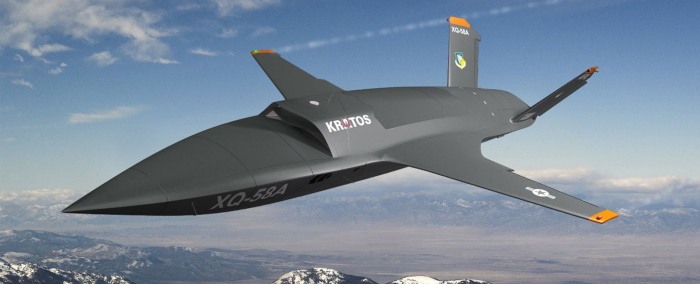
Can AI Skyborg Technology Create Unpredictable Yet Consistent Military Aircraft?
The word Skyborg conjures up images of Arnold and the Terminator movies. An artificial neural network-based conscious group mind and artificial general superintelligence system attempting to take over the world. (OK, technically in the movies it’s Skynet, not Skyborg.) So, what is Skyborg? And what are its implications for U.S. Defense?
According to the Air Force Research Laboratory, “Skyborg is an autonomy-focused capability that will enable the Air Force to operate and sustain low-cost, teamed aircraft that can thwart adversaries with quick, decisive actions in contested environments.” A key element of the program is the “loyal wingman” concept whereby one manned aircraft can control multiple unmanned aircraft, allowing for unmatched combat capability per dollar by lowering barriers to entry for industry and allowing continuous hardware and software innovation. Notably, however, Air Force policy dictates that people are always responsible for lethal decision-making. Therefore, Skyborg will not replace human pilots, but rather, Skyborg will provide human pilots with key data to support rapid, informed decisions.
To fast track this potential game changing capability, Skyborg was designated as a Vanguard program in 2019 by the Air Force. The Skyborg program topped the Air Force’s 2021 $3.2 billion Unfunded Priority List, illustrating the significance the Air Force is placing on the program. In 2021, the Air Force is expected to spend over $157 million on its three Vanguard programs, with an additional $25 million for Skyborg on the Unfunded Priorities List. By fiscal 2023, the Air Force expects to deliver the first operational versions of Skyborg.
Air Force Research Lab aerospace systems directorate engineer Matt Duquette explained the scope of the system: “Skyborg is a vessel for AI technologies that could range from rather simple algorithms to fly the aircraft and control them in airspace to the introduction of more complicated levels of AI to accomplish certain tasks or subtasks of the mission.” A major issue to solve is getting the AI up to speed. Skyborg requires more advanced systems than are currently available on the market. The system not only has to be more sophisticated than any AI available now but also has to be developed for a world that understands how it works. If the AI is too predictable, it is easy to beat, rendering it useless in a combat setting.
A key element of the Skyborg program is “attributable” unmanned aircraft. Attributable UASs blur the line between a reusable UAS (think an MQ-9 Reaper) and a single-use cruise missile. “Even though we call Skyborg an attributable aircraft, I think we’ll think of them more like reusable weapons,” says Will Roper, assistant secretary of the Air Force for acquisition, technology, and logistics. What this means in practice is that the new generation UASs will be reused until the end of service life, when they could then be turned into targets, or, depending on the mission, the UAS could go on a one-way mission if the pilot determined the target was important enough. This will result in a steady stream of UAS purchases by the Air Force.
Attributable aircraft costs are coming in in the less than $5 million per unit range. They compared this with the world’s most advanced fighter jet, the Lockheed Martin F-35, which costs around $100 million per jet. Four of these in formation means almost half a billion dollars of hardware in the air. Losing just one fighter is costly for the US Air Force’s budget, to say nothing about the potential human cost. Using attributable aircraft can potentially save millions providing enormous flexibility to the Air Force budget at a time when every dollar truly counts.
Skyborg will represent a significant upgrade in force projection. At a cost of a few million dollars per unit, the autonomous drones are more easily replaceable and could form a central role in the USAF’s air power. The F-35 is billed as a force-multiplier; when partnered with an UAS it could get a new capability boost.
If we needed another reason to look at AI technology or aerospace contractors as investments ready to take flight, here it is.
Suggested Reading:
Unmanned Momentum Continues with Recent $35 Million Award
Virtual Power Plants and Tesla Car Batteries
Enjoy Premium Channelchek Content at No Cost

Each event in our popular Virtual Road Shows Series has maximum capacity of 100 online investors. To take part, listen to and perhaps get your questions answered, see which virtual investor meeting intrigues you here.